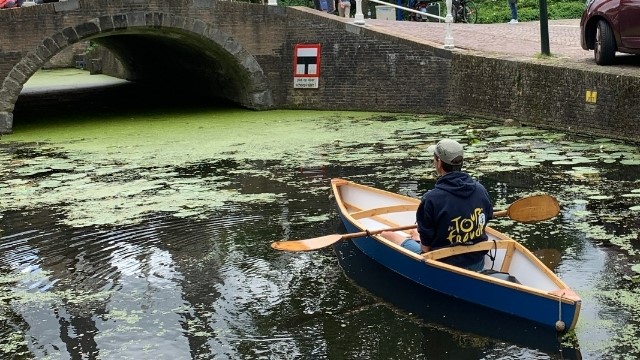Most boat hulls are made of composite, wood or steel. But there’s another, elegant and lightweight construction method: skin on frame. The skin on frame method is very efficient structurally, but also material and processing-wise. Especially the latter was very convenient, given the small garden where I wanted to build my canoe. The process takes three main steps: erecting the frames, bending the strakes, and, finally, skinning and finishing.
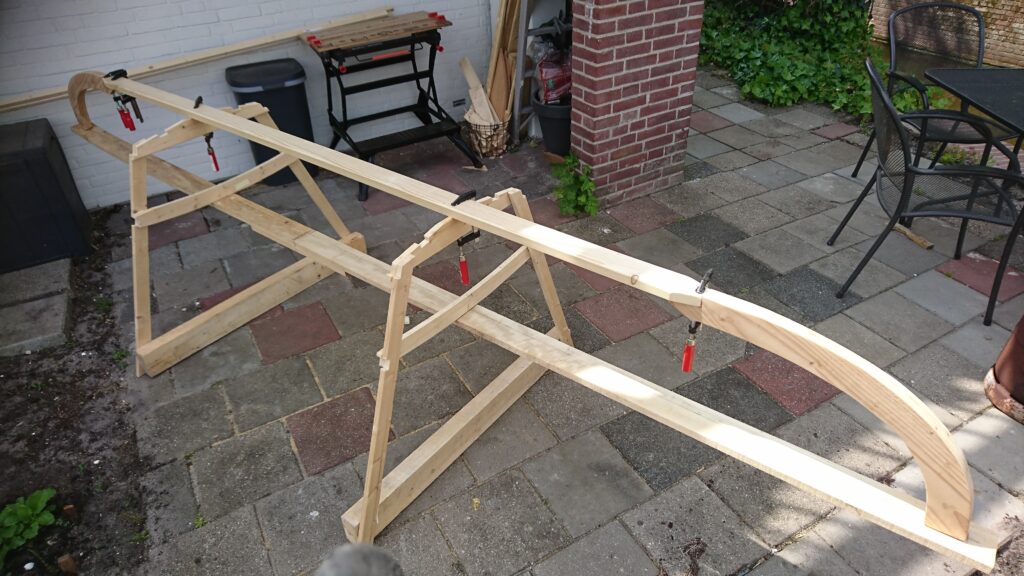
The first step was to build the front and aft frames. I chose to use pine, which could be conveniently harvested from a set of old bedding slats. The frames, as well as the stem and stern pieces were then positioned on the keel. Another, temporary, plank was mounted on top of the frames to secure the alignment of these main frames. The assembly was then placed upside down.
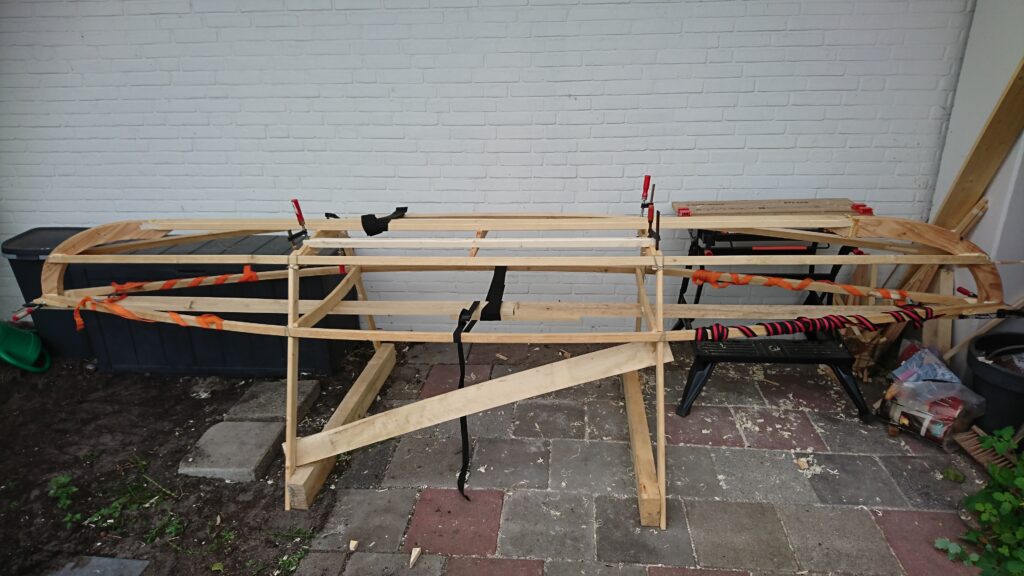
Next, it was time to place the strakes. To make the slats pliable, they were soaked in the canal for a day or two. Then, with some gentle nudging and strategically positioned lashings, the slats were bent onto the frames. When dried, the frames were varnished.
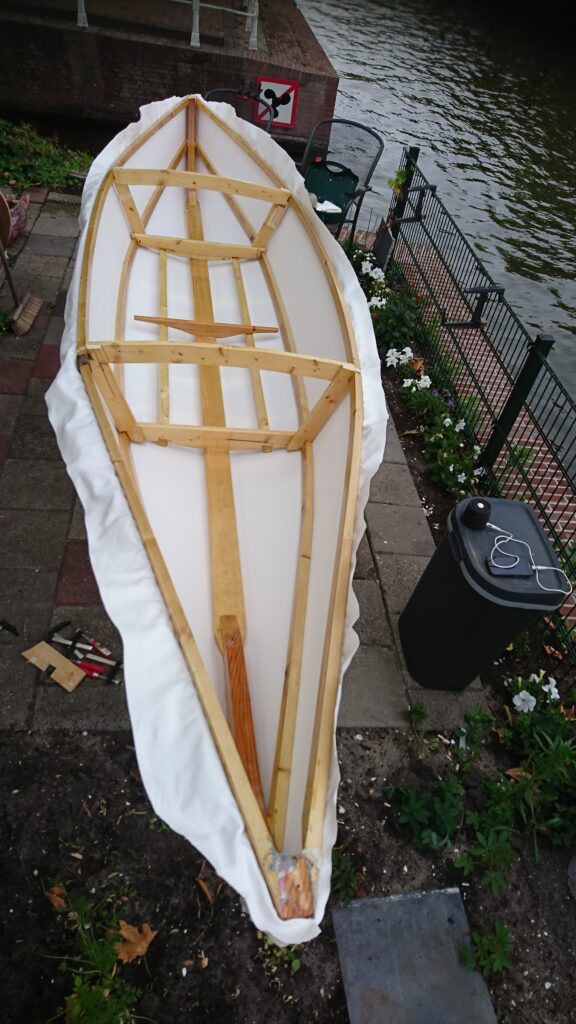
The last step was to skin and finish the canoe. For the skin I used lightweight cotton tent canvas, because it promised to be stiff, strong and waterproof. I started tensioning the fabric from the center towards the tips of the canoe. Working on starboard and port side alternately to maintain equal tension. To ensure the skin would be watertight I painted the outside with latex exterior paint, which was recommended because of its flexibility and waterproofing quality.
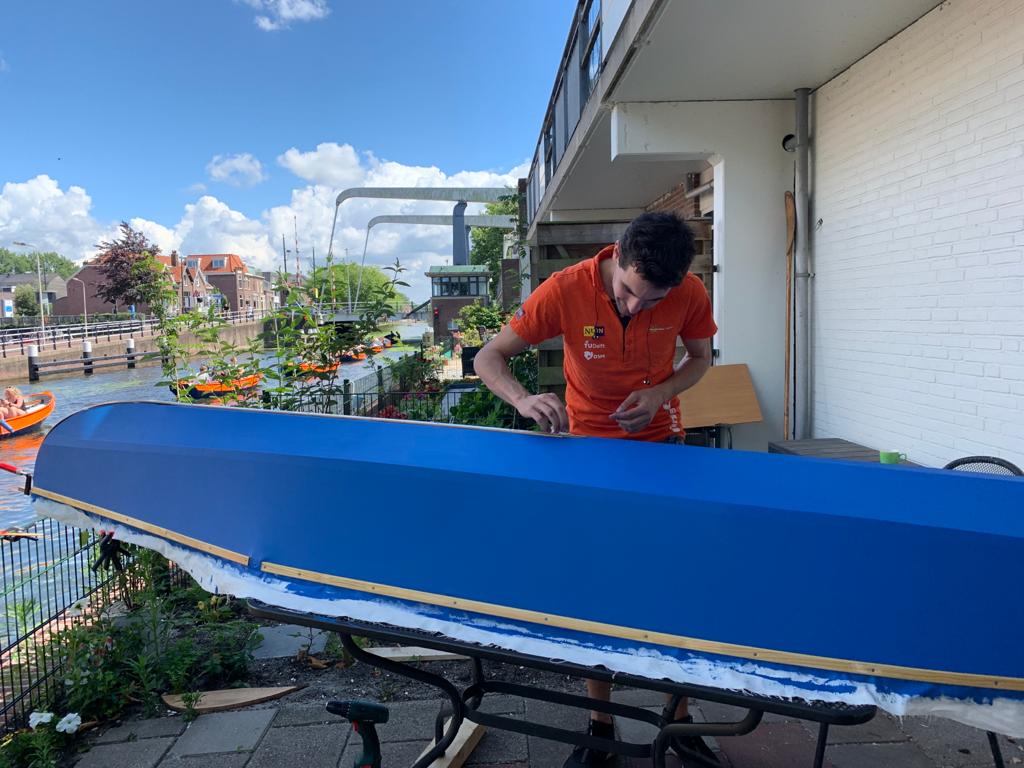
The result is great! I could directly launch the canoe from my backyard into the canals and start paddling about. The slight V-shape in the hull gives it some directional stability. The double-ended model, combined with the rounded bottom provides good handling in choppy waters.
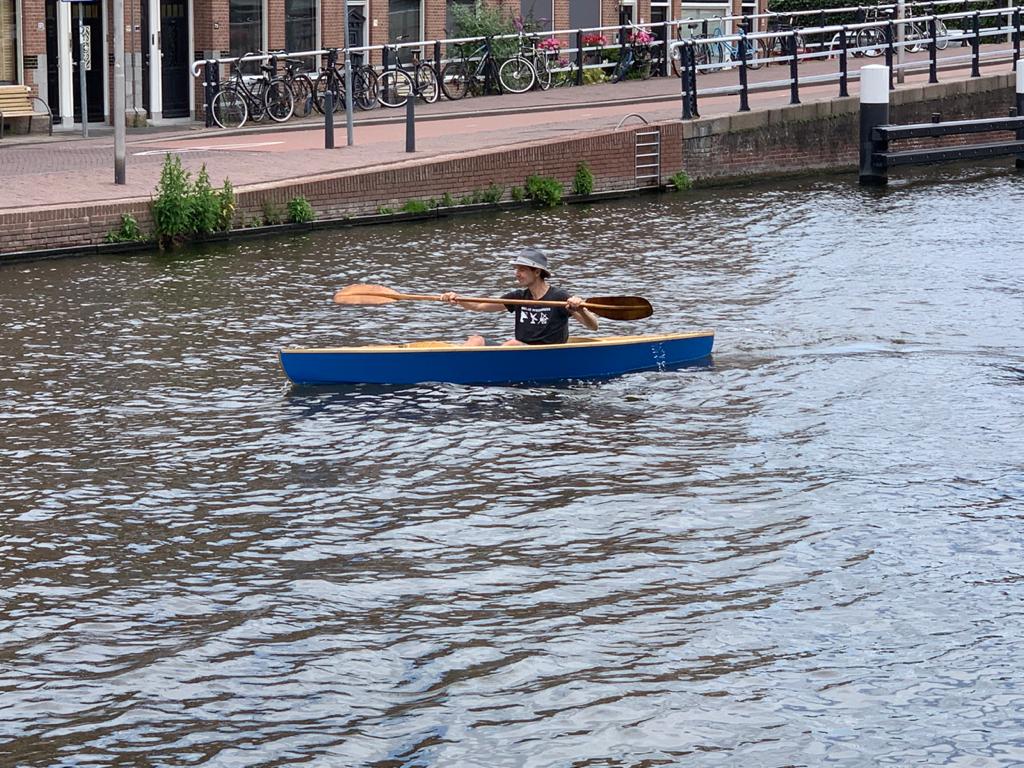
The design of the canoe was based on the “eskimo boat” described in the book “How to build your own boat from scratch” (Traister, 1978). The plan originally had the frames clad with plywood, but with a few modifications I found the skinning fabric to work just as well. In terms of weight and production (time, equipment) fabric arguably even outperforms plywood.
